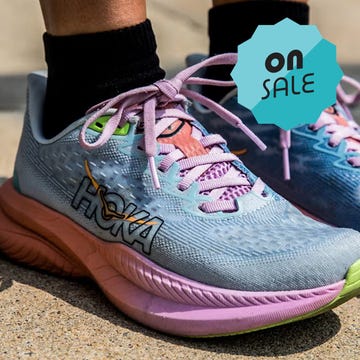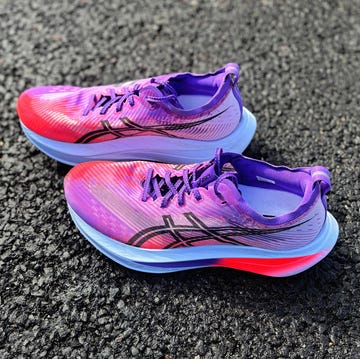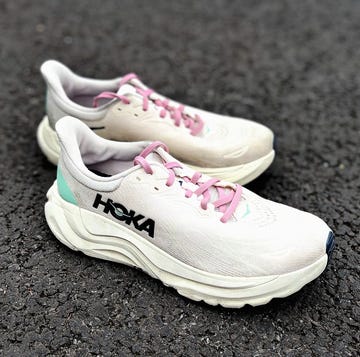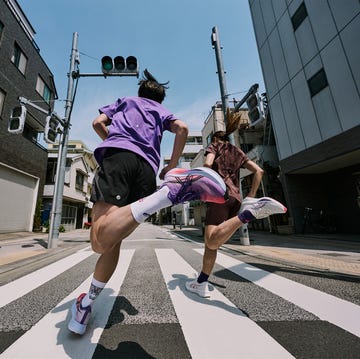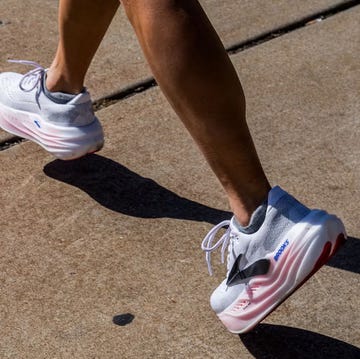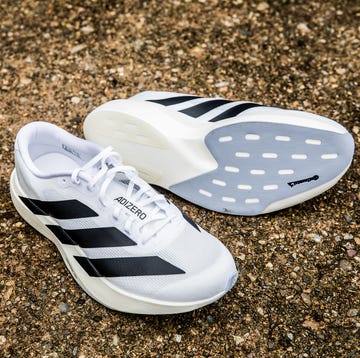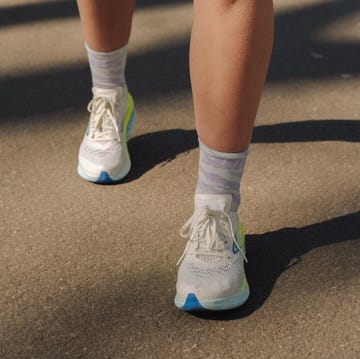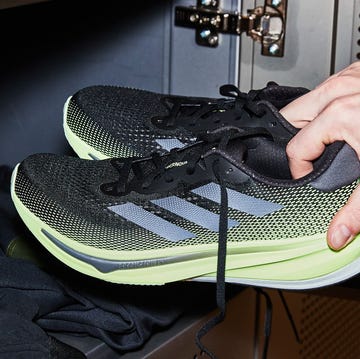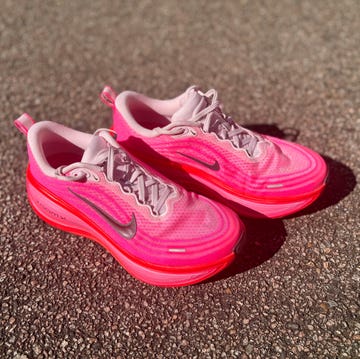If you’ve just started running, let it be said that there’s nothing wrong with having one solid trainer, especially if you're taking days off between runs. This will likely be a daily workhorse, suited to a few different types of sessions – think the Pegasus 40 or the Hoka Rincon 3.
But if you’re getting a bit more serious about your training, you might want to introduce a shoe rotation. In short, this means you have a dedicated shoe for each type of session – so specific tools for specific jobs.
Now, we don’t really need any more excuses to go adding a new pair of running shoes to our basket, but building a shoe rotation might actually benefit your training. Here’s why – and how – to create yours.
What everyone's reading
Why should you rotate your running shoes?
You can tailor your sessions
Certain shoes are built for specific purposes, so when you have a shoe rotation you can gear your shoe towards the right type of run. For example, a shoe that’s got a much softer ride will provide plenty of cushioning for those slower, recovery days, while something more responsive might be better for tempo sessions and hitting those PBs on race day.
It makes them last longer
While it may seem like a hefty investment up front, a shoe rotation can actually help to extend the lifespan of your running shoes, saving you money in the long term. Just like your body, shoes need to recover between sessions. Running shoes have soft foam in the midsole, which is what’s responsible for providing cushioning and energy return. Over the course of a run, this foam compresses, and, if you’re wearing the same shoe every day, will eventually decompress fully. Giving your shoes time to recover gives the foam a chance to expand again, helping you to get more distance out of them.
Salt from your sweat can also accumulate in the fibres of the upper, which can cause premature wear and tear – another reason to let your shoes have a breather between sessions. However, you can, of course, wash the uppers if needed by gently scrubbing with a wet, soapy sponge. This is good practice, as it will extend the life of your running shoes and keep them looking fresh for longer.
It reduces your risk of injury
Running is a sport that puts a great deal of load on the body. If you’re continually running in the same pair of shoes, with the same midsole height and firmness, there won’t be any variation in the muscles you’re recruiting in your legs, ankles and feet or any difference in your gait pattern. Rotating your running shoes may help to avoid overuse injuries and repetitive strain. A low heel-drop (5mm or less), for example, will make your feet, achilles and ankles do more work, while a large heel drop (10-13 mm) will put more pressure on your knees, thighs and hips.
Research seems to agree too: a 2013 study found that runners with more than one pair of running shoes had a 39% lower risk of getting injured than those who almost always ran in the same shoes.
How many running shoes do you need?
There’s no hard and fast rule for how many pairs of shoes you should have on the go at once. Some people might have two or three, while others may have five or more. Factors to consider include your weekly mileage, your training split (easy vs hard sessions), and the types of distances you'll be covering.
As a general rule, it's a good idea to have a pair of cushioned shoes for those slower, recovery sessions, and a more lightweight and responsive pair for speed workouts and racing.
Ideally, you want to avoid wearing the same pair on two consecutive days, so if you’re running higher mileage, or follow the 80:20 rule, you might want a couple of pairs of cushioned shoes for those slower runs, and one pair that can pick up the pace. Three pairs is generally the sweet spot for most road runners, but depending on how technical you want to get, you could include more.
Types of shoes for your rotation
The daily trainer: A solid all-rounder that can handle everyday miles, and has a bit of responsiveness to it for some uptempo efforts
Cushioned shoes: A softer, plusher ride, geared towards slower miles and easy runs.
Speed shoes: A lighter and more responsive shoe for quicker paces and race days. These can be divided up into shoes for shorter races, and ones for longer distances. For example, we like the lighter Nike ZoomX Streakfly for 5K and 10K races, and a more cushioned, carbon plate shoe like the Alphafly Next% 2 for half and full marathons.
Stability shoes: Designed for those who overpronate when they run – where the foot rolls inwards a lot when it hits the ground. These shoes have good cushioning, along with some kind of support to moderate pronation – generally a firmer insert on the inside of the midsole.
Trail shoes: If you’re someone who enjoys heading off road, you’ll want to factor this into your rotation, with a dedicated trail shoe that can conquer mud and technical terrain. Some trail shoes – like the Hoka Challenger 7 – have shorter lugs (2mm-4mm), and are more suited to dry, hard-packed trails, even coping okay on roads. Those with deeper lugs (5mm+) are designed for tackling mud and sloppy conditions and would feel too uncomfortable for road running.


